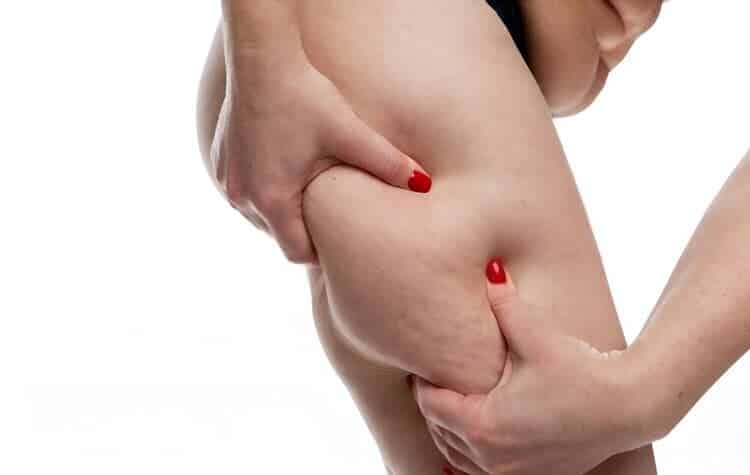Are you among those people who exercise every day, follow a healthy diet dedicatedly and still can’t get rid of those stubborn body fat?
It may sound unbelievable but in fact, a lot of people face issues like that! Sometimes body fat is too stubborn to all your hard efforts and also you may need a little extra assistance with major surgery to get that perfectly toned body shape.
One such method is Liposuction or Lipoplasty. It’s a cosmetic surgery that is performed to remove excess fat or remove unwanted body fat cells from different parts of your body such as your groin, thigh, hip, abdomen, etc. The plastic surgeons will recommend this cosmetic procedure to you only when you are physically fit and your fat cells are such that can’t be reduced by exercise or diet.
People who smoke and who have a weak immune system or bad health conditions aren’t advised to have Tumescent Liposuction treatment, as they take longer to heal. People who can’t take anaesthesia or you easily get an allergic reaction then you will also be asked not to have this surgery. There are some Liposuction risks in surgery like fluid accumulation, infection, delayed wound healing or the need for surgery again as you can gain weight again, with fresh fat cells, which normally go to some different parts of your body.
So, let’s now find out more about the liposuction procedure, liposuction treatment, and also the side effects of liposuction in this article below. This will show whether you should go for such a surgical procedure or not.
What Is Liposuction Surgery?
Liposuction surgery is a procedure used to remove extra fat from particular parts of the body using a suction method. This is generally used to remove fat from areas like the abdomen, neck, thighs, buttocks, arms, hips, etc. part of the body. Liposuction also contours (shapes) these parts. Other terms for liposuction procedures include body contouring as well as lipoplasty.
In this procedure, a small incision is made and a small tube is made at the place where the fat cells are to be removed, in which the fat is removed by vacuum suction. Before performing traditional Liposuction, wellness professionals will check your medical history. And after the treatment, your surgeon may prescribe some painkillers to relieve pain.
Liposuction is not generally considered a comprehensive weight-loss procedure or an alternative to the weight-loss process. In case you are overweight, you are suggested to lose weight through exercise and a healthy diet or with bariatric methods—like gastric bypass surgery. Moreover, after Liposuction, secondary surgery may be suggested to decrease excess skin in that particular area.
NOTE:
Maybe you’re a candidate for liposuction plastic surgery if you’ve got too much fat in a particular area instead of needing fat removal from the entire body. This is certainly not an overall weight-loss method.
What Are The Types Of Liposuction?
There are 5 main types of liposuction techniques that surgeons can choose from to treat you.
Tumescent Liposuction Treatment:
This is one of the most common types of surgery of liposuction. In this technique, the surgeon injects a particular fluid into the spotted body areas. The main parts of this typical fluid are as follows:
Saltwater; this aids in fat removal and thus liposuction reduces fat from your body
Lidocaine; is a local anaesthesia
Epinephrine; is used to tighten blood vessels to prevent excessive bleeding in the area of the surgery. This fluid breaks down the fat in the marked area. Then the surgeon inserts a cannula at the place via an incision and then attaches suction to draw out all the excess fat from the marked area.
Dry Liposuction Treatment:
No fluid gets injected before the fat removal procedure. This technique is rarely used now. There’s a higher risk of bleeding and bruising in this type of technique.
Laser-Assisted Liposuction Or LAL Treatment:
A laser beam gets utilised to break down the body fat via a small incision. This fat is then sucked out using a cannula and suction.
Ultrasound-Assisted Liposuction Or UAL Treatment:
An ultrasound probe gets utilized on the part of the desired spot to break down the fat, after which your excess fat gets taken out using a cannula via a small incision. There is a modified version of this treatment which is known as VASER Assisted Liposuction. Here VASER stands for “Vibration Amplification of Sound Energy at Resonance”.
Power-Assisted Liposuction or PAL Treatment:
The PAL treatment uses a cannula to make rapid back-&-forth moves. This back & forth movement helps in easily removing the hardened fat. It can let the surgeon remove excess fat with high precision. It’s used for individuals who need to remove considerable amounts of fat from a particular area of their body.
NOTE:
There are many specialists and hospitals in London where such surgery is performed with a great rate of success.
Liposuction Cosmetic Surgery Procedure
Your liposuction procedure involves sucking excess fat from a particular part of your body. Thus, you should make sure that you are getting the treatment done by a professional who has standards, good results, safety and success rate. So, here is the procedure that your surgeon will follow during the surgery…
- Your surgeon will inject a solution containing a drug (epinephrine) and local anaesthetic (Lidocaine) into the marked areas.
- Then your surgeon will make an incision in your skin to insert a cannula (which is a skinny, small tube attached to a suction machine) into your skin’s fatty layer.
- The solution then fills your skin’s fatty layer and swells the fat to make the fat firmer. This allows your surgeon to have control while contouring the targeted spot.
- It even causes temporarily shrinks the blood vessels to significantly reduce blood loss throughout the procedure, and reduces swelling, bruising, and also pain after the treatment.
- This procedure then uses a back & forth movement to suck through the extra fat and take out the fat in that tube.
- Elastic compression apparel is then given to help your skin contract as well as heal soon.
After the completion of the surgery, you can expect the following from your entire treatment procedure.
- Before the treatment of liposuction begins, your surgeon will mark the spots of your targeted body parts. They will also take pictures to use for before-&-after result comparisons.
- You can go home the same day as the treatment. However, it will be better if you avoid driving the car yourself and instead, you should take assistance from others to help you reach home. Especially when excess fat is removed from your body.
- Your surgeon may prescribe a few medicines depending on your condition. It is not for every patient. This varies for individual patients.
Benefits Of Liposuction Treatment:
Liposuction is usually done for fat reduction, but it’s often used to treat specific conditions. These conditions include the following:
- Gynecomastia: Often fat stored under a male’s breasts. In such cases, some men prefer to go through such surgery.
- Lymphedema: This is a long-term, or chronic, health condition where excess fluid called lymph stores in tissues, and thus the fluid causes swelling, or oedema. Oedema generally appears in the legs or arms. Liposuction is often used to reduce such discomfort, swelling, and also pain.
- Lipodystrophy Syndrome: Often fat is stored in a specific part of your body. Liposuction can help the appearance of such a patient by offering a more natural-looking fat distribution in the body.
- Lipomas: Well, these are mainly fatty, benign tumours that can be treated by Liposuction.
Recovery From Liposuction
The local anaesthetic injected can last for approximately 24 hours after surgery. This significantly minimizes pain in your body. However, as soon as the effect of the anaesthesia wears off, you will experience some pain that typically deals with Tylenol.
You may restart exercise 3 to 7 days after the treatment. In case your job doesn’t involve heavy physical labour, you can presumably return to your job within a few days only.
Most of the swelling issues go down within a few days only. Although you’ll see progress within 1 to 2 weeks after the treatment. However, it often takes around 3 to 4 months, in addition to this, in a few special cases this may take around six months or so, to see the full benefit of the treatment.
What Are The Liposuction Side Effects?
Similar to any other surgery procedure, there’s a possibility for risks in Liposuction. Likewise, liposuction plastic surgery has a few of the following side effects. Let us describe the side effects below-
Skin Infection:
Such infections are very rare but not impossible. A serious skin sensation may occur after the treatment. Your skin may also appear wavy, bumpy, or withered because of lumpy and uneven results of fat removal. Moreover, yous skin may experience poor skin elasticity as well as unusual healing after the treatment.
Fat Emboli:
This means that pieces of broken-down body fat can enter your blood circulation to block major blood vessels as they stay in the blood vessels. This raises the risk of kidney problems or heart problems as it leads to major blood clot issues.
Pieces of fat may get trapped in your blood vessel and thus then gather in your lungs or may travel to your brain. Such a condition is a medical emergency which needs immediate action.
Internal Puncture:
Seldomly, a cannula that enters too deeply may cause puncture wounds or injuries to other internal organs of your body. This may need emergency surgical restoration ASAP.
Skin Colour Changes:
Change in your skin colour around the incision is possible. Moreover, Permanent contour irregularities appear in the areas of the body that got treated. These changes in skin colour may be permanent or temporary. Damage beneath your skin from the cannula that is used throughout liposuction may provide your skin with a permanent or temporary spotted appearance.
Accumulation of Fluid Under Your Skin:
Seromas (Temporary fluid pockets) can develop under your skin. This may require to be emptied using a needle as soon as possible. The risk of infection because of fluid accumulation is possible in the surgical area.
Side Effects of Lidocaine; General Anaesthesia:
Side effects of lidocaine are also known as Lidocaine toxicity. It’s a general anaesthetic often injected during liposuction. Although normally safe, in some cases, lidocaine toxicity can happen, causing severe heart problems and problems to your central nervous system.
The Incision Takes Time To Heal:
Damage to your blood vessels at the area of surgery because the incision may take longer to heal. After the fat is removed using a thin tube may cause an incision mark that often takes longer to heal.
Thrombophlebitis:
This is a blood clot that generally forms in your vein, which may cause inflammation as well as further difficulties in your body.
Numbness In The Treated Area:
You may experience permanent or temporary numbness in the treated area. Also, temporary irritation in your nerve is possible after the treatment.
Kidney, Lungs, & Heart Problems May Appear:
As fluids get injected and then suctioned out, this may lead to potentially life-threatening lung, heart, and kidney problems.
The Skin May Become Loose:
In case you’ve got good skin tone & elasticity, your skin will appear smooth after the treatment but if the skin is thin and has poor elasticity, then your skin may appear loose in the treated areas.
Inflammation:
Your skin may experience some inflammation and swelling that can take up to six months to fix, and fluid can continue to bleed from the incision.
Allergic Reactions:
You may be allergic to materials used or medications during surgery so be careful and get treated by a professional who takes care of all the risks of Liposuction.
NOTE:
If you feel any discomfort after your treatment, you should immediately contact your surgeon.
So What Is The Best Alternative to Liposuction?
If you are looking for a quick and easy way to get rid of all the flab on your body, liposuction is not the answer. Sure, it’s convenient, it hurts less than other methods, and it’s cheaper than some other alternatives. But that doesn’t make it the best alternative for you!
First of all, liposuction is an invasive procedure that can lead to scarring and infection. And since it cuts straight through fat cells, you’ll have lots of loose skin left over that won’t be able to tighten up on its own, especially if you’re losing weight rapidly.
Not only that, but it costs a lot to get liposuction done at a reputable clinic or plastic surgery office—an amount that most people don’t have lying around today. If a person spends all their money on liposuction and then loses weight fast enough that they need another round of procedures done soon after, they could be stuck with disfigured hips or unsightly pockmarks on their stomachs for the rest of their lives!
If you’re looking for a better alternative to liposuction and want to lose weight without spending thousands or leaving scars behind or getting infections, then Coolsculpting might just be answer for you.
Coolsculpting
In some ways, CoolSculpting is like liposuction, but in other ways, it is very different. The first difference between these two options for removing excess fat is CoolSculpting is a non-evasive, non-surgical procedure that targets and eliminates stubborn fat deposits without the risk of surgical complications.
The 2nd difference is price. Liposuction can cost you thousands of pounds with each session, and there may be a need for several sessions if the problem areas are spread out over your body. Coolsculpting is much more affordable, particularly since all you need is one session that costs only a few hundred at a time.
Benefits over Liposuction
- It’s an FDA-approved
- Fast result
- Reduce up to 25% of target area in only two months
- Non-invasive nature
- Affordable for everyone
- No recovery time
BOTTOM LINE
Like all other surgeries, liposuction treatment also carries both advantages and disadvantages. Complications are typically minor and rare. However, the most common complication of Liposuction includes lumpiness, skin irregularity, dimpling, persistent numbness, loose skin, skin moulds, infections, vein infection etc.
Coolsculpting freezes the fat cells directly without harming your body at all! It’s also safer than liposuction because there’s no risk of infection and very little risk of bleeding or bruising if you’re treated by an experienced practitioner.
If you’d like to know more as a provider of CoolSculpting in London get in touch via our contact form or call us directly for more info 020 3538 0738.
Q. Is Liposuction Covered By The Health Insurance Plan?
A. Most of the time health insurance plans do not cover liposuction treatment as it is a cosmetic procedure which is not a necessity but a luxury. However, you can talk to your health insurance company as well as your plastic surgeon about the payment options and costs, also who pays in case you have any difficulties.
Q. Does Liposuction Treatment Permanently Remove Body Fat?
A. Well, this is a tricky question. Initially liposuction procedure permanently removes body fat from the treated area but this is not a permanent solution. Removed fat doesn’t come back, but existing fat can increase with general weight gain. Thus, you have to ensure you don’t gain weight again by exercising and dieting regularly.
Q. When You Can See The Results of Liposuction?
A. You’ll start seeing progress within 1 to 2 weeks after the treatment. However, it often takes around 3 to 4 months, in addition to this, in a few special cases this may take around six months or so, to see the full benefit of the treatment.
Q. Does liposuction treatment leave scars?
A. Unfortunately “Yes” it does. Liposuction treatment is conducted by making one or two 1-inch small incisions which may form a scar later.




